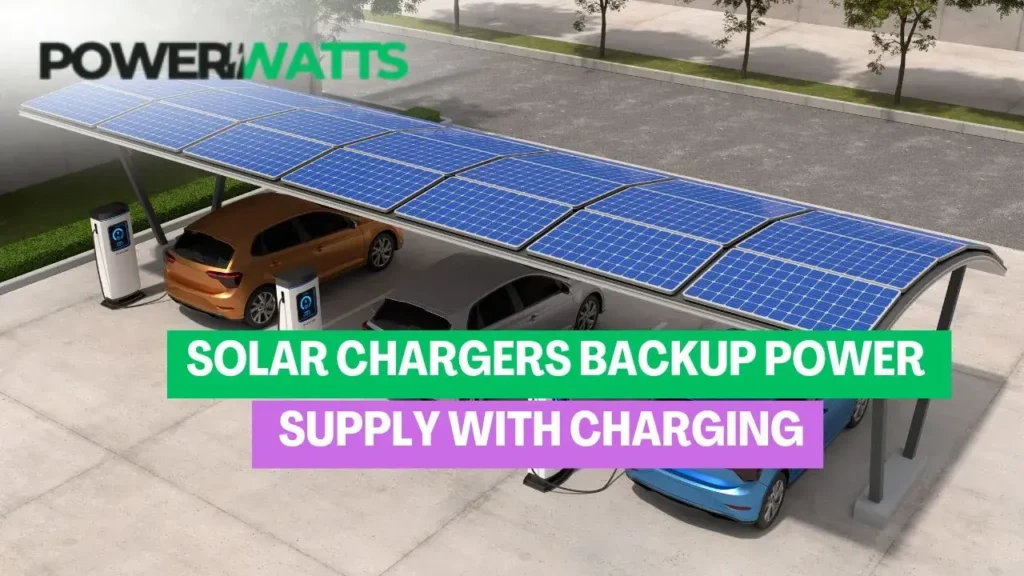Solar chargers’ backup power supply with charging has become important tools for both home and outdoor use in a time when energy freedom and sustainability are very important. These methods give us a safe way to get energy and help lower our carbon footprint at the same time. This blog will go into great detail about solar chargers and backup power sources, looking at how they work, what they can do, and how they can be used. It’s important to understand these technologies if you want to keep your devices powered while camping or make sure your home stays functional during power blackouts.
Understanding Solar Chargers Backup Power Supply With Charging
Solar chargers are gadgets that turn sunlight into power and store it into a special batteries, so you can charge your electronics straight from the sun. They are especially helpful for people who like being outside, traveling, and wanting to keep their power on during situations. On the other hand, backup power supplies store energy made by solar panels or other sources, so they can be used when the main power grid goes down.
Solar Chargers And its Types
Photovoltaic (PV) cells turn sunshine into direct current (DC) energy. This is what most solar chargers are made of. You can then use this electricity to charge batteries or directly power things. Maximum Power Point Tracking (MPPT) technology is built into a lot of current solar chargers. This technology adjusts the electricity load on the panels to get the most energy out of them.
- Portable Solar Chargers: Because they are small and light, they are great for hiking, camping, and traveling. Usually, they have USB ports that let you charge phones, tablets, and other small electronics.
- Solar Power Banks: These gadgets can be charged by the sun and store energy in batteries, so you can use the energy later. They are especially helpful for long trips where power is hard to come by.
- Solar generators are bigger systems that have solar panels, a battery, and an amplifier. They provide a stronger power source that can be used at home or in an emergency. They can power lights, tools, and other things when the power goes out.
Benefits of Solar Chargers Backup Power Supply With Charging
- Sustainability: Solar energy can be used over and over again and is easy to find. This means that we don’t have to rely on fossil fuels as much and greenhouse gas emissions are lower.
- Cost-effectiveness: Solar chargers and systems can save you a lot of money on your power bills and give you free energy from the sun after the initial investment.
- Versatility: These systems can be used in a range of places, from homes to camping trips, so they can meet a wide range of energy needs.
- Dependability: If you have a solar backup power supply, you can keep the power on even when the power goes out, so important gadgets can still work.
Choosing the Right Solar Charger
When choosing a solar charger, think about these things:
- Power Output: Figure out how many watts you need based on the electronics you want to charge. A solar generator for the house might need 1000 watts or more, while a small charger for smartphones might only need 10 to 20 watts.
- Size of the Battery: If you choose a solar power bank, make sure it has enough charge power (measured in milliamp hours, or mAh) for your needs.
- Portability: For use outside, pick items that are small, light, and easy to carry.
- Durability: Make sure the solar charger is made to last in the outdoors, including being resistant to dust and water.
Setting Up Solar Chargers Backup Power Supply With Charging
Putting together a solar backup power system requires a few important things:
- Solar panels: These take in light from the sun and turn it into power. What you need to know about the size and number of screens is what you need.
- Inverter: This part of the system changes the direct current (DC) energy from the panels into alternating current (AC), which most home products can use.
- Battery Storage: Batteries store extra energy that is made during the day so that it can be used at night or when the power goes out. Lithium-ion batteries are famous because they work well and last a long time.
- Charge Controller: This part controls the power and current that come from the solar panels so that the batteries don’t get too charged.
Installation Considerations
- Placement: Put the solar panels where they will get the most sun, preferably facing south in the northern hemisphere.
- wire: Make sure all the links are safe and that the wire is rated correctly for the amount of power being used.
- Permits: Check your local rules about installing solar panels; some places may need permits or checks.
Maintenance of Solar Chargers and Backup Power Supplies
For best efficiency, regular upkeep is a must:
- Cleaning: To get the most sunlight, keep the solar panels clean and free of any dirt or dust.
- Battery Care: Keep an eye on the battery levels and check them every so often to make sure they are working right.
- System Checks: Check links and parts for damage or wear regularly.
Conclusion
Installing solar chargers and backup power supply transforms energy independence and sustainability. Solar energy provides steady electricity for everyday tasks and emergencies.
Explore your energy alternatives before switching to solar power. Get a Quote for customized solutions from PowerWithWatts. You can make better selections by understanding solar charger and backup power supply technologies and maintenance. Embrace solar power and manage your energy use for a sustainable future.


